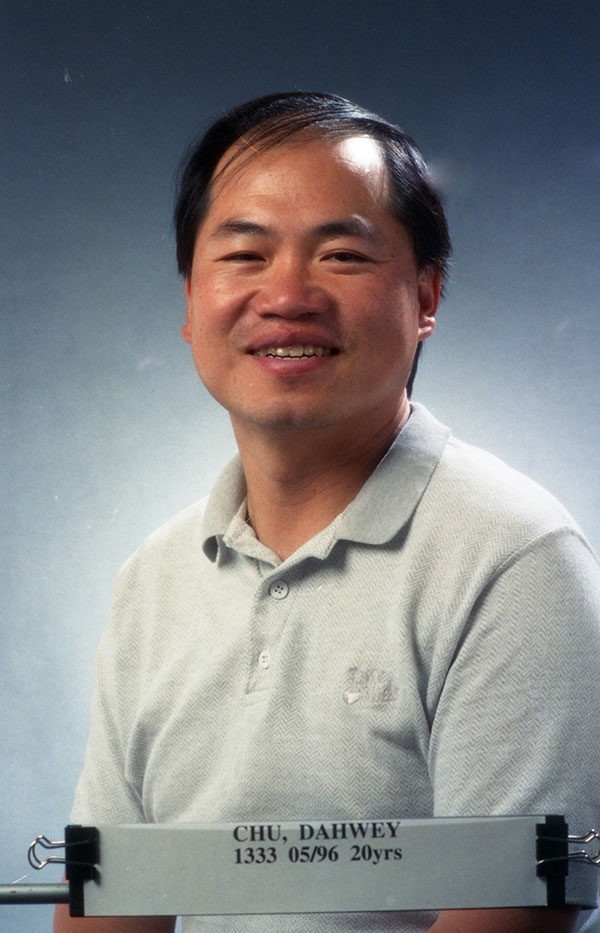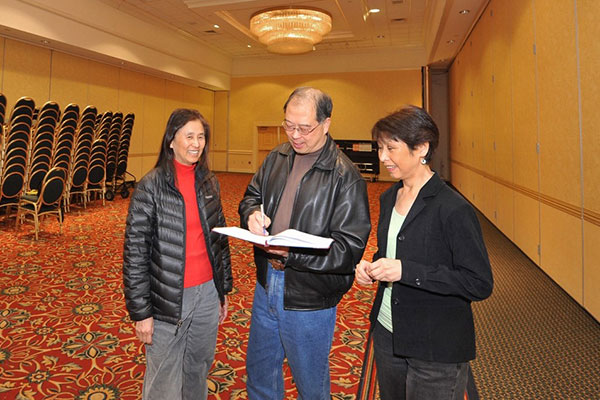
Some important history needs to be part of the Lab News coverage of Asian American and Pacific Islander Heritage Month activities and outreach. I thought about the history of Asian Americans within Sandia — the significant individual achievements and their impact within the Labs and beyond. But in the context of the current round of violence directed at Asian Americans, I kept returning to the late 1990s and the last big outbreak in the country of open discrimination and hostility directed at Asian Americans.
The Asian Leadership Outreach Committee formed in October 1988, one in the suite of outreach groups that bloomed during the 1980s in the employee push for greater opportunities within Sandia for underrepresented groups. Unlike some of the other groups, ALOC’s work is not a history of struggle to hire or to get people into the STEM fields because, as Pauline Ho, the first chair of ALOC noted, “Asian Americans are already well-represented in science and engineering.” Instead, the group focused on issues of underrepresentation in management and cultural diversity, such as improving awareness, increasing opportunities for growth and ensuring retention.
In the late 1990s, a security investigation began into a possible leak of classified information from the nuclear weapons complex. It appeared China may have received information on U.S. nuclear weapons designs, specifically the W88, and might have used the information to advance its own weapon designs, or not. Then, in March 1999, the New York Times published a story about the investigation, asserting that a spy at Los Alamos National Laboratory had provided secrets to China. Two days later, a follow-up story identified the suspected spy as Wen Ho Lee, a LANL computer scientist who had just been fired.
Throughout Congress, DOE and the nuclear weapons complex, there were immediate efforts to address perceptions of lax security. Investigative reports from Congress and the President’s Foreign Intelligence Advisory Board warned that staff in the national laboratories appeared arrogant and cynical regarding security.
Sandia Director C. Paul Robinson addressed security in his annual State of the Labs and other talks, reminding the workforce of its importance, but also pushing back on the stereotype being drawn of the staff. By that point there were clear indications of racial profiling in security briefings and ill treatment of Asian Americans within the complex.
Paul called this out as unacceptable. He spoke of a meeting with Asian American Sandians at Sandia/California, and was quoted in the July 2nd, 1999, Lab News saying “that the previous worst espionage cases — and the worst traitors in our history — were Aldrich Ames, the CIA fellow, and the Walker family father-and-son espionage team. All of those were Anglos.” Paul was underlining the absurdity of attributing espionage to anyone based on ethnicity alone.
On June 16, 1999, DOE Secretary Bill Richardson directed a work standdown and security immersion activity throughout DOE. Sandians spent June 21-22 in a program focused on security awareness and training. Two days later, Secretary Richardson visited Sandia/NM, praising the workforce for its attention. In the same presentation, he noted reports that Asian Americans within the national labs were experiencing discrimination. He asked anyone experiencing such treatment to report it to him, as he had formed a task force to look into discrimination and racial profiling. Asian American staff at Sandia successfully spoke out to improve their treatment.
On December 10, 1999, Wen Ho Lee was arrested and indicted on 59 felony counts of mishandling classified information.

After a series of hearings on security within the nuclear weapons complex and the complexity of DOE’s bureaucracy, Congress created the National Nuclear Security Administration. NNSA was born in early 2000 as an autonomous agency within DOE.
In January 2000, with the report from his discrimination task force completed, Secretary Richardson announced there would be a DOE-wide diversity standdown. On April 5, 2000, everyone within the DOE universe spent a day focusing on diversity. DOE provided content and each site also developed its own material. Paul Robinson was particularly lauded for the passion and commitment expressed in his presentation.
Most impressive and probably useful were the testimonials by individual Sandians on their experiences with discrimination in Building Bridges videos tailored to the NM and CA sites. While the standdown was generally considered a positive step, it was also seen as and proved incomplete on its own.
To summarize: The tight coupling of security concerns with the singular focus on Wen Ho Lee as a suspect in China’s potential nuclear weapons espionage allowed existing prejudices and stereotypes full expression. Although leadership at the national and Labs level spoke out against racism, much of the initial language on espionage and security from higher levels reinforced prejudicial fears. Annual security briefings provided to DOE sites by headquarters included clear anti-Asian statements and, while they were subsequently halted and scrubbed, they reinforced existing prejudices. It became difficult to overcome statements of distrust and to ensure that Asian Americans were treated with respect within the DOE community generally and Sandia specifically.
The Wen Ho Lee case ended in September 2000 when he pleaded guilty to one felony count of mishandling data and accepted the judge’s apology for how he was treated. There were subsequent security incidents within the complex and another major security standdown in 2003.
Later, in the wake of all this unprecedented national attention on security at the national labs, my husband was serving as a consultant in Sandia’s Advanced Concepts Group.
Tim was born in New Jersey of Chinese descent. He loved working in the ACG. But he came home quite frustrated at the way he was treated by people in meetings. He frequently was asked whether he spoke English and if he was a U.S. citizen. I mentioned this to a manager in my line and he said, “That is as it should be. It’s just prudent.” I was glad to have Paul Robinson’s comments about U.S. spies usually being white males to hand, so that I could note that only asking members of one ethnic group if they are citizens leaves a large gap in your potential spy catching.
The story hasn’t ended, because, here we are. The immediate Sandia context is much different this time, because the resource groups, the Inclusion, Diversity, EEO and AA organization and Labs management were already offering speakers and panels and open discussions of how we can move toward inclusion when anti-Asian American Pacific Islander violence erupted. There have been excellent speakers and panel discussions on the matter. I hope it will have a greater effect this time.
Sandians honored as top Asian American Engineer of the Year
As AAPI Heritage Month celebrates the contributions to the United States and the world of Americans of Asian Pacific Islander descent, we cannot doubt their contributions to Sandia. As a sample of some of those making an impact in science and engineering, here are the many Sandians honored as Asian American Engineer of the Year winners.
- Raymond Ng (2002)
- Shawn Lin (2002)
- Er-Ping Chen (2004)
- Tze-Yao Chu (2004)
- Eliot Fang (2006)
- Wen Hsu (2007)
- Jackie Chen (2009)
- Cliff Ho (2010)
- Pin Yang (2011)
- Hongyou Fan (2012)
- Rekha Rao (2012)
- Ming Lau (2012)
- Jeffrey Tsao (2013)
- Yifeng Wang (2014)
- Somuri V. Prasad (2015)
- Patrick Feng (2015—Most Promising Engineer of the Year award)
- Tian Ma (2016—Most Promising
- Engineer of the Year award)
- Ireena Erteza (2017)
- Hy Tran (2018)
- Stan Chou (2019—Most Promising Engineer of the Year award)
- Bo Song (2020)
The Asian American Engineer of the Year awards began in 2002 in the wake of fallout from the Wen Ho Lee case. Their purpose is “to recognize and honor outstanding Asian American professionals in Science and Engineering for their technical achievements, leadership and public services.”